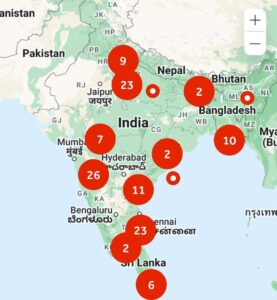
Net & Gross Metering
Under net metering, electricity generated by the Solar Rooftop System is first utilized by the consumer to meet their internal/captive requirements. Excess electricity, if any, is exported to the grid. Subsequently, when the consumer imports power from the grid, the exports are adjusted against the imports, lowering the electricity bill.
For example if the consumer opted for net metering then following possible cases will occur.
Case i): if consumer has a monthly electricity consumption of say 1000 units and he also installed solar rooftop plant at his premises which is capable of generating 600 units per month, then at the month end he will get an electricity bill for net energy consumed from the grid which is 400 units (600 units are locally generated by solar power plant) and pay the bill only for net consumed units.
Case ii): If the same consumer has a monthly energy consumption of say 500 units and installed solar rooftop plant at his premises having capability of generating 600 units per month, then at end of the month he will get an electricity bill for net units consumed from the grid which is 0 units and the excess 100 units generated from solar power plant will be credited to next month electricity bill.
At the end of specific period decided by state nodal agencies the consumer will get paid for the net energy exported to DISCOM in the specified period at an Average Power Purchasing Rate (APPC) which will be vary from time to time and decided by State Electricity Regulatory Commission.
Under gross metering, all the electricity generated by the Solar Rooftop System is exported to the grid and all the electricity required for consumption by the consumer is imported from the grid. The consumers are paid a feed-in tariff (FiT) for the electricity exported to the grid.
For example if consumer opted for Gross metering scheme then the energy settlement is done as explained below.
If the consumer has a monthly consumption of say 1000 units of energy and also installed a solar rooftop plant having a capability to generate 500 units of electricity. At the end of every month he will be charged for total consumed energy which is 1000 units at a normal tariff decided state electricity regulatory commission from time to time. The energy generated from the solar rooftop plant will be recorded by a separate gross meter and DISCOM will pay for those many units recorded by the gross meter, at the pre-determined rate, called the Feed in Tariff rate (FiT).
In the picture below, N stands for net meter and G stands for Gross Meter.
HEAD OFFICE
Level 35, The Gateway, 150 Beach Road, Singapore,189720

SERVICE CENTRE TOUCHPOINTS

CORPORATE OFFICES
Becquer Energy India Pvt. Ltd. ( A Becquer Energy Company) Level 8, Tower 2B, One World Centre, Senapati Bapat Marg, Lower Parel, Mumbai, 400013
Becquer Malaysia Sdn Bhd,D-8-3A, Menera Suezcap 1, KL Gateway, Kualalumpur,59200


